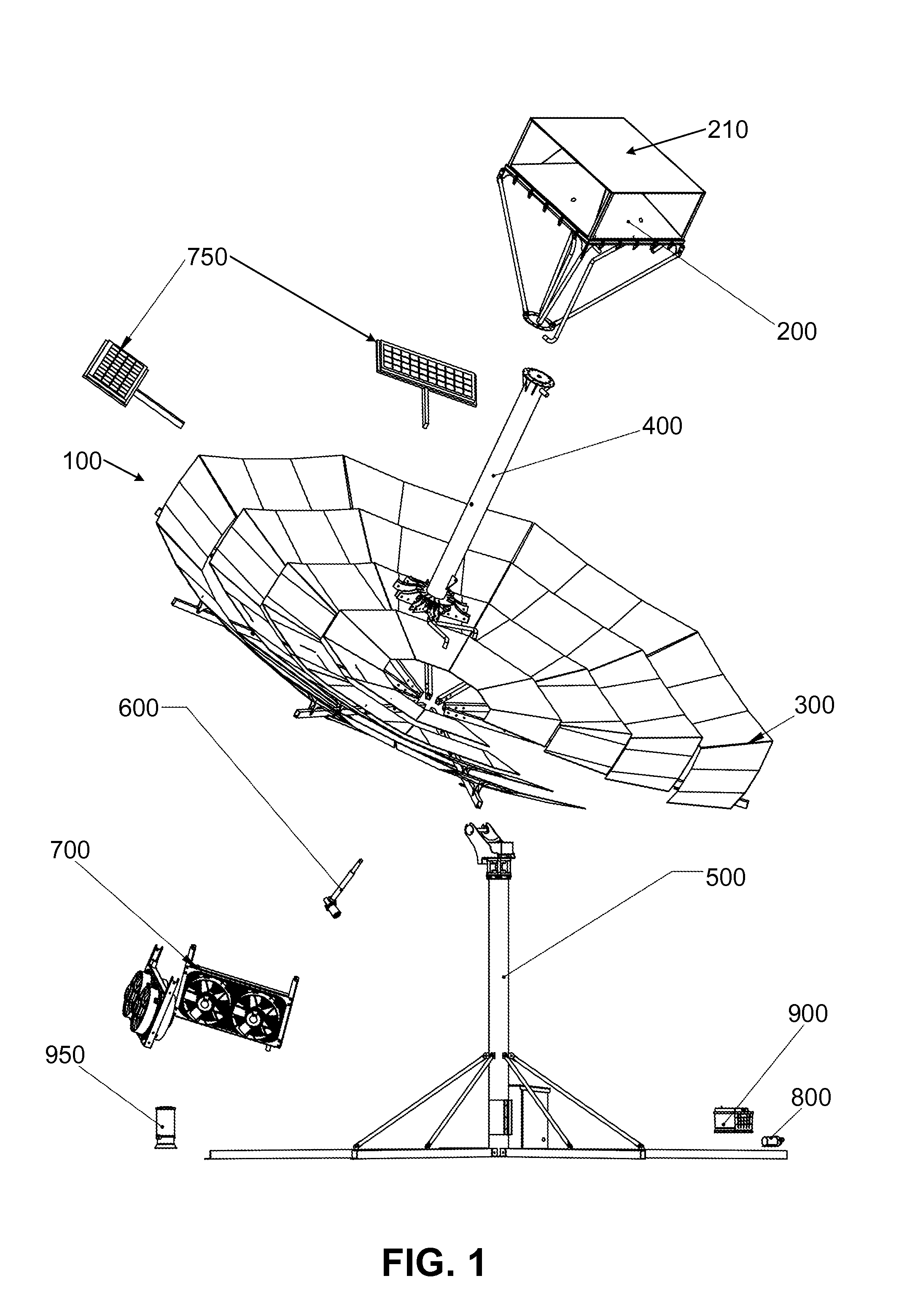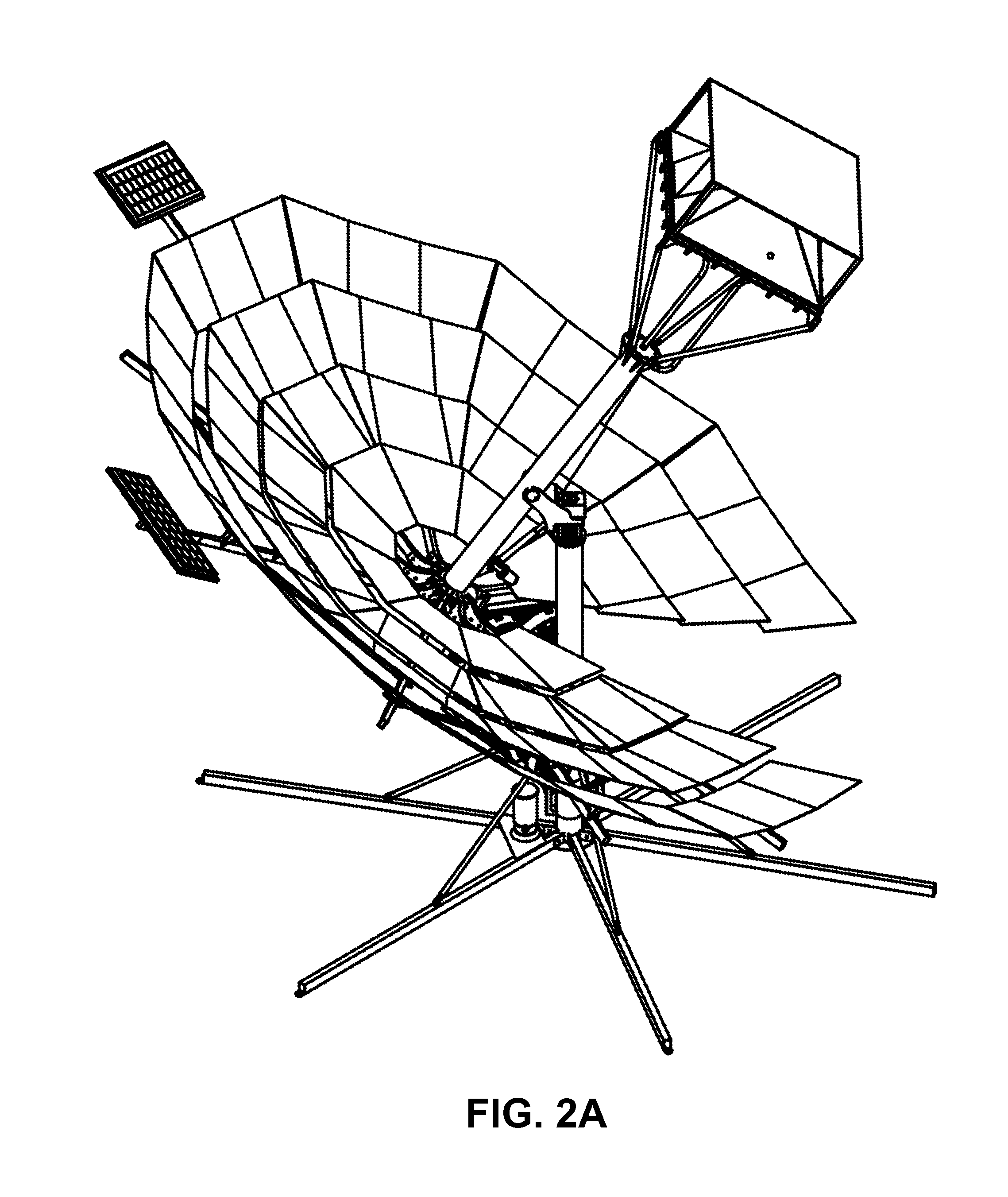Throughput solar still
a solar still and solar energy technology, applied in vacuum distillation separation, separation process, vessel construction, etc., can solve the problems of large energy requirements and wear of certain components, relatively high method costs, and high cost in and of itsel
- Summary
- Abstract
- Description
- Claims
- Application Information
AI Technical Summary
Benefits of technology
Problems solved by technology
Method used
Image
Examples
Embodiment Construction
[0020]Solar stills operate on the same principles that produce rainfall, that is—salt water is warmed and evaporated, then cooled to condense back into pure water. Other working liquids, such as sugar solutions in one embodiment, or alcohol in yet another embodiment, may work the same way.
[0021]In one embodiment, salt water or contaminated water is pumped from a nearby source and fed into the pyramid shaped boiler. The sun is used to heat the water in order to cause evaporation. This is achieved in another embodiment by an array of mirrors directed at the sun (heliostat) and pointed towards a boiler. The high temperatures produced destroy all pathogens, thus in certain embodiments, decontaminate the water even in the absence of salt. The water in one embodiment evaporates, and in this process, only pure water vapor rises in the shaped boiler, or heat exchanger. The water vapors cause head pressure and flow from the boiler into a counter current heat exchanger (CCHE), where heat is e...
PUM
| Property | Measurement | Unit |
|---|---|---|
| energy | aaaaa | aaaaa |
| length | aaaaa | aaaaa |
| length | aaaaa | aaaaa |
Abstract
Description
Claims
Application Information
 Login to View More
Login to View More - R&D
- Intellectual Property
- Life Sciences
- Materials
- Tech Scout
- Unparalleled Data Quality
- Higher Quality Content
- 60% Fewer Hallucinations
Browse by: Latest US Patents, China's latest patents, Technical Efficacy Thesaurus, Application Domain, Technology Topic, Popular Technical Reports.
© 2025 PatSnap. All rights reserved.Legal|Privacy policy|Modern Slavery Act Transparency Statement|Sitemap|About US| Contact US: help@patsnap.com



